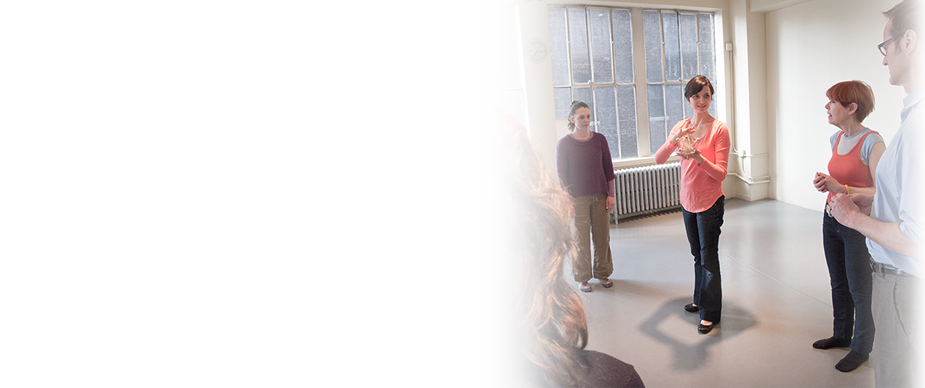Don't Stand At Attention...Instead Pay Attention
/Alm'as Posture Medal from P.S. 131 in Queens, 1949
My client, Alma, told me a great story about how she won a posture medal in elementary school in 1949 at P.S. 131 in Queens, New York. She illustrates through her description of the posture test that she had to do in class that using a lot of effort to stiffen, straighten, and hold yourself up doesn’t improve your posture and may create more problems (though I do advocate for dividing loads evenly when you’re carrying things!)
Here's Alma:
I got the medal because I didn’t think anyone else wanted it. I actively campaigned for it. I told all of my teachers that I hoped to get it. I also divided my books in to equal loads on each arm whenever we walked through the hall between classes. In hygiene class, we were old to do that to improve our posture. In that class we had to stand with our backs against the wall while the hygiene teacher tried to slide her hand in between the small of our back and the wall. This was supposed to cause us to suck our tummies in, but what it did, in my case anyhow, was to cause me to round my shoulders and stick my pelvis forward, an unfortunate physical habit that I’ve worked very hard to reverse.
It’s very common to think that you have to hold yourself in a certain way in order sit and stand up straighter involving pulling your shoulders back, lifting your chin, or sucking your belly in. Do these things now as an experiment. Do you feel relaxed or comfortable? Can you breath easily? Probably not. If you’re stiff and you can’t breath easily, you’re posture is not good. In fact, you may be causing more problems than if you did nothing to fix it at all. Instead of adding more stress and tension to the problem, it's better to pay attention and deal with what’s causing the problem in the first place.
This starts with simply noticing where your attention is and what your body does in turn.
Where is your attention now? Odds are it’s probably on a screen. Are you dropping down toward the screen? Are you straining your neck to look at the screen? If so, stop doing those things. They are completely unnecessary for you to do in order to see your screen. If you’re holding your phone, you may want to raise it up a bit (Not really high. Just bring it a closer to your face without lifting your shoulder.) Instead of dropping your head down or craning your neck, just gently nod your chin toward your chest (gently nod, don’t pull your chin in or over-straighten your neck).
That wasn’t too hard right? Trouble is, that screen likes to pull your attention toward it, so you might be back to the old thing in 2 minutes.
I’m writing this on a train and I am leaning all the way back in the seat as I type on my laptop. I feel the seat on my back…an extra reminder not to pull forward as I type. I’m relaxing my back and shoulders on the seat and just letting my fingers do the work of typing. Do you ever tighten your shoulders as you type? Try sitting all the way back in your chair, relaxing, breathing, and not pulling your shoulders forward. Also, keep your feet on the floor as much as possible.
Improving your posture is a lot about noticing your habits and then not doing them. Notice where your attention is drawing you and where your body goes when it’s on autopilot.
Yes, you might have to remind yourself over and over for awhile to get the new habits to stick. Just like it takes time and practice to learn a musical instrument, it takes time and practice to change postural habits.
Now let’s get a little more subtle…we’ve looked at some things that you can start to change about your posture when using your computer and phone, but let’s look at what you can do more generally. Here it goes…Scratch the top of your head. (The center of the flat part on top, not the back of your head. Look in the mirror from the side if you’re not sure). Now take your hand away and notice the top of your head. The sensation of having just scratched there should help you. Bring your attention up to the top of your head often. Just your attention. Don’t stiffen, hold your breath, or tighten your jaw. Just be aware of where your top most point is and be aware of it often.
Often after I explain this to people (about the top of the head), they ask me what they should be doing on their own to work on their posture…and I say that what I just showed them about the top of the head is what they should start with. People are often skeptical. They think they should do more. There must be a way to hold and tuck yourself, but holding and tucking won’t improve your posture. Moving your attention up will help keep your from slumping down.
Instead of trying to force yourself into an unnatural upright position, change the habits that are pulling you down and making you tense. Do more thinking and less pulling and tucking. Your mind tells your body where to go, so find out where you attention is going and use your attention to tell your body where to go.



